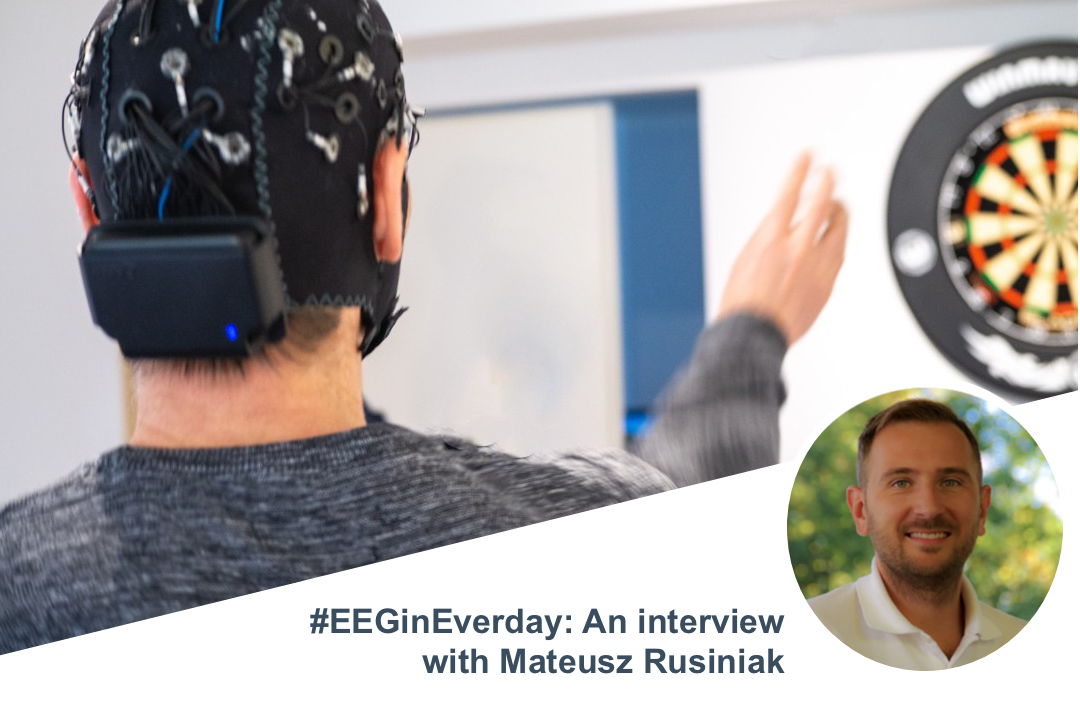EEG in everyday life: As scientists and researchers, we have asked ourselves – what happens in our brain when we play darts or table football? How does it actually work and why can we sometimes not react as fast as we want? We have investigated these interesting activities using BESA software together with mBrainTrain, a manufacturer and pioneer of fully portable, mobile EEG devices, and have come to interesting results.

Who are you and what is your professional background?
I am a Multi-Modal Scientist and Test Manager at BESA. But most importantly I am a researcher. My career path took a few interesting turns. I studied at Warsaw University of Technology in the Electronics Faculty. For my master’s thesis in engineering, I established the first simultaneous EEG-fMRI pipeline in Poland, which was pioneering work back then. I went on to the World Hearing Center in Warsaw, where I continued using this technique in research and preclinical applications, e.g. for evaluating brain correlates of dyslexia treatment, which lead to a Ph.D. at the Medical University of Warsaw. After this, I worked for GE as Eastern European Clinical Lead, and finally, I ended up at BESA. Here I can exploit all the skills I have, the multimodal data processing knowledge, software development, research attitude, and customer-oriented approach. All in all, I always wanted to know more about how the brain works and deliver tools that will help others with a similar goal.
How did you get the idea to study brain activity outside the medical lab?
From time to time in daily life we come across situations that we simply don’t understand. For example, have you ever played table soccer? There is a certain ball speed (between fast and slow) that you cannot react to as a goalie. Why? What is going on? Moreover, how can we actually play table soccer? It is complicated when you think about it – hand-to-eye coordination, reflex decision making… and we still consider this as entertainment? Darts – another case of eye-to-hand coordination – is there a mechanism at play similar to table soccer or totally different?
Read the full interview on LinkedIn right here.

Comments are closed.